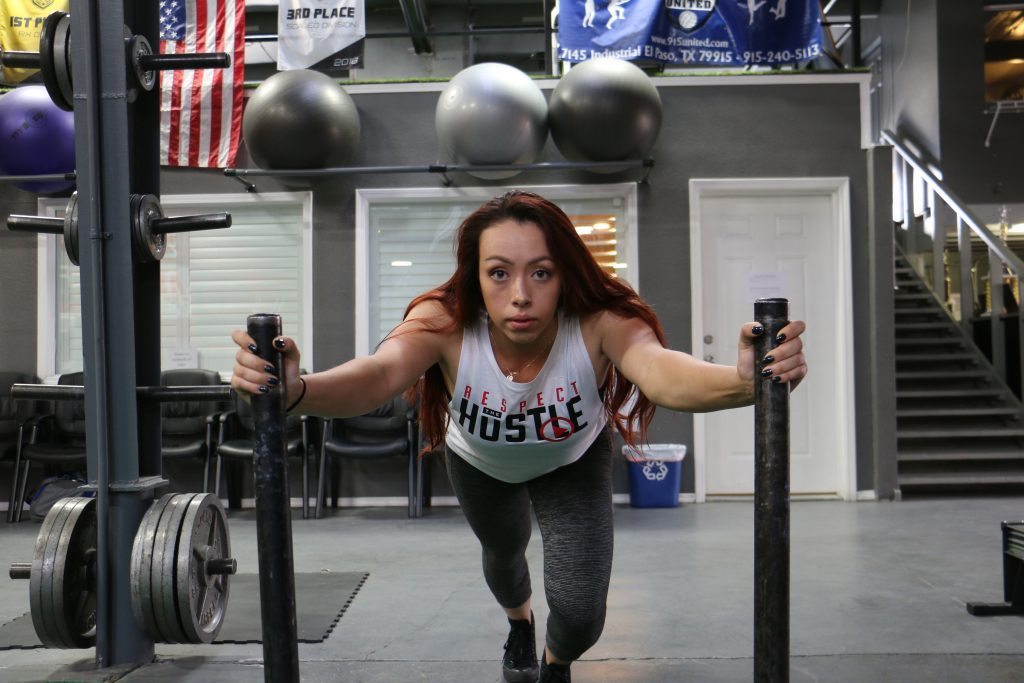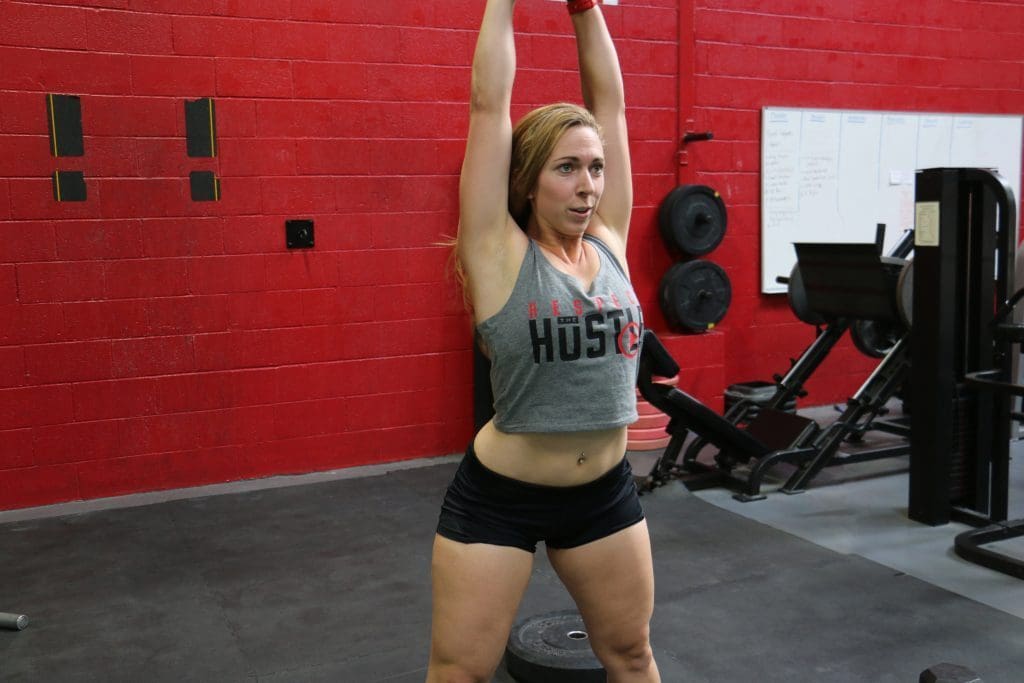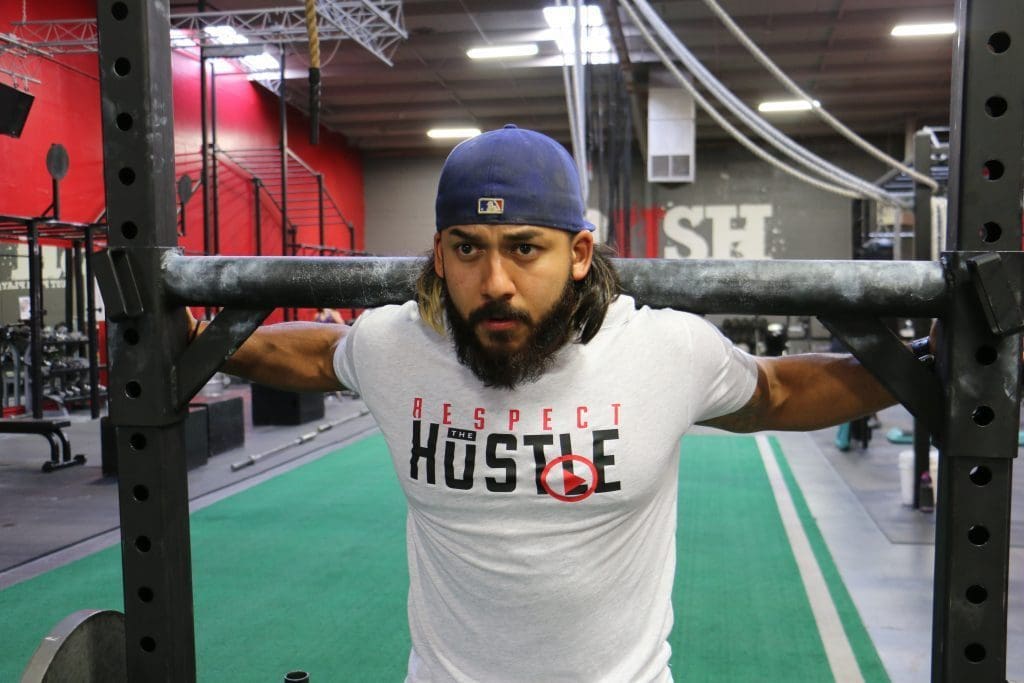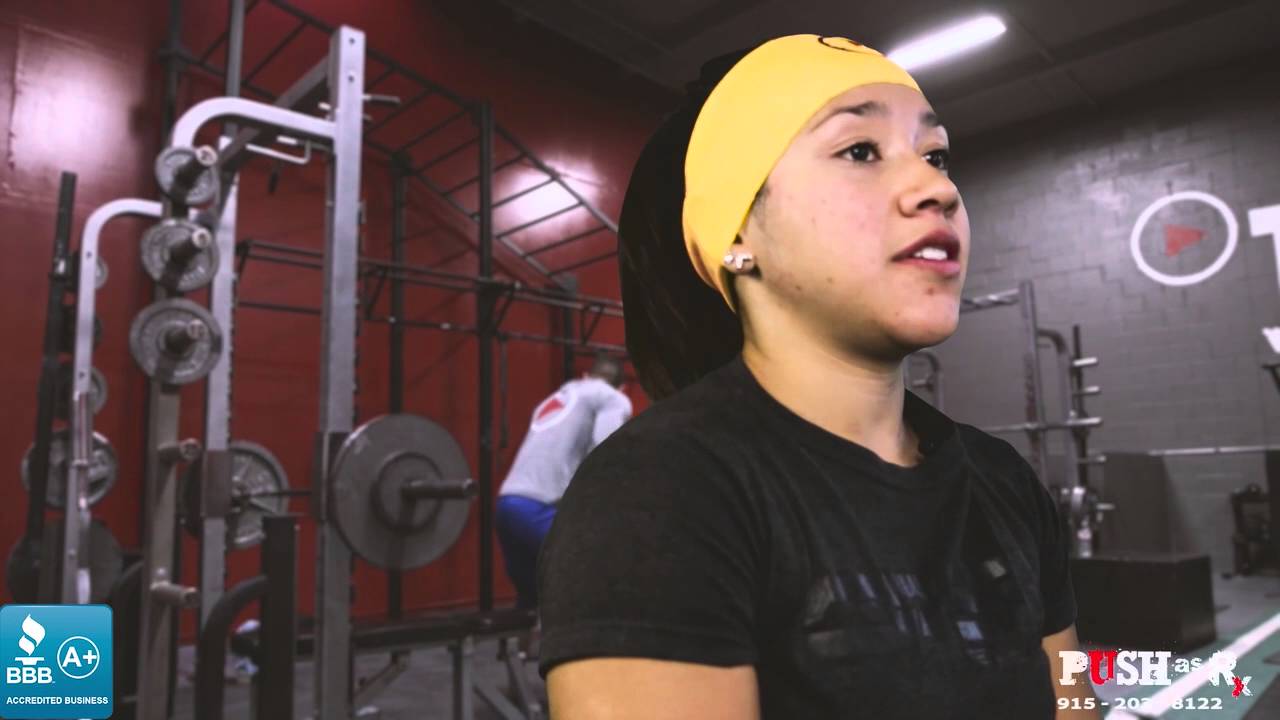Exercise physiologist & PUSH-as-Rx ® fitness facility owner Daniel Alvarado breaks down what a Crossfit workout consists of, the benefits & basic guide to Crossfit.
CrossFit is a high-intensity, always altered, functional movement exercise plan which has found a massive increase in popularity all over the world since it started in the early 2000s. What originally began as an exercise plan to help train military forces, firemen and police is currently taking the fitness world. CrossFit workouts assure to maintain members in the most effective shape of the lives, building muscle quicker, promoting better healing and usually meeting a complete support network of like-minded folks in the act, also!
An increasing amount of accredited CrossFit trainers, gyms, and programs now being offered across the planet, you may be wondering what all of the fuss is all about.
Table of Contents
CrossFit?

CrossFit is a type of conditioning and strength workout that uses your own bodyweight for resistance in order to build power all over. Consistent with the benefits of high-intensity interval training, this means no regular cardio workouts and hours spent in the gym. CrossFit workouts may be performed entirely without extra weights or any gear, even though some people will decide to make use of weights for certain motions.
As stated by the creators of CrossFit.com, several simple observations taken from top-performing athletes training over the previous 30 years have formed the basic principles behind CrossFit workouts. Here are some of the essential rationales why they ’ve been growing in popularity ever since, and CrossFit workouts were introduced:
- Hefty lifters have the ability to employ more power to tasks than endurance athletes. Powerlifters − those who try to lift maximum weights within three efforts − are especially powerful.
- People and sprinters conditioned to do Burst Training are usually capable to fit the cardiovascular benefits and abilities of endurance athletes, but with less time spent training.
- Endurance athletes and bodybuilders are usually very specialized in their sport — for example, being aerobically fit or quite muscular — but can be lacking in versatility (like having allover strength, power or stamina).
- Doing HIIT workouts and training at high intensities (meaning workouts that will be unsustainable for extended intervals) leads to numerous health benefits, including more rapid weight loss along with more fat-burning and muscle-building.
- HIIT workouts could be done immediately (under an hour or so and at times much less) and don’t demand someone to work out every single day to steadfastly keep up strength.
CrossFit brings together knowledge from a diverse background of the world physically healthy individuals to form one full-body work out high in mind-body benefits. Especially, CrossFit workouts cover “10 Fitness Realms” including:
- Cardiovascular and Respiratory
- Stamina
- Strength
- Flexibility
- Electricity
- Speed
- Coordination
- Agility
- Balance
- Accuracy
6 Benefits of CrossFit Workouts

1. Better Conditioning and Versatility
CrossFit programs are made to increase physical performance in a diverse way, whether it means being able to simply perform everyday tasks better (like mowing the lawn) or preparing your body for demanding competitions. CrossFit athletes train their muscles, joints and ligaments using functional movements, which means they’re useful for more than simply looking great in a bathing suit. Well rounded workouts that use large muscle tissues and different ranges of movement lead to better general health, strength, flexibility, posture and balance.
2. The Ability to Overcome Through Tablelands
CrossFit is broadly varied and based on compound, or functional, movements done in a high-strength manner. This type of training is considered effective at attaining fitness results in the quickest amount of time, while in addition helping you break through plateaus and apathy.
CrossFit isn’t just one kind of workout repeated day after day — in fact, it’s essentially the opposite. By continuously switching up the kinds of exercises performed, muscles used and intensity, CrossFit workouts keep you from plateauing since your muscles constantly must work in new ways. Each plan itself can be adjusted to accommodate all types of people, simply by changing up the weight load, duration as well as intensity of the workouts based on someone’s level of physical fitness.
3. Help Shedding Weight Fast
While lots of people fear doing steady state cardio exercises, yet force themselves to do them anyhow expecting to lose weight, they’re not constantly aware that high-strength explosion training exercises can burn off more fat and in less time.
A 2013 study published in The Journal of Strength and Conditioning unearthed that improvements in body composition, including fat loss and muscle gain, were critical for all those following a CrossFit plan, aside from their degree of first fitness. The reason behind the study was to analyze the ramifications of a CrossFit-established high-intensity power training (HIPT) program on aerobic fitness and body composition. A total of 23 healthy, adult men and 20 healthy, mature girls crossing all levels of body makeup and aerobic fitness finished 10 weeks of HIPT. Their workouts consisted of lifts like the squat, deadlift, clean, snatch and overhead press, performed as fast as you possibly can in a circuit style.
Body fat percentages were estimated before and following the training program along with maximal aerobic capacity (VO2max) to trail endurance developments. After 10 weeks of training, the results demonstrated significant developments of VO2max and decreased body fat percentage in both men and women. The critical correlation coefficients between absolute oxygen consumption and oxygen consumption relative to bodyweight additionally signal that CrossFit workouts help improve VO2max regardless of someone’s starting changes in their own fat and muscle percentages, body composition, sex, or level of fitness.

4. Less Time Spent Working Out, but More Results
Many people believe that they don’t have time to regularly exercise these exercise hacks try if you’re consistently time-crunched — and they could not be using that time to their greatest advantages when they do figure out how to squeeze in a workout. Group–based high-intensity functional training (HIFT) supplies time-efficient aerobic and resistance exercise at self-selected intensity levels. Studies show these kinds of workouts that are shorter and more intense, coupled with control on the intensity, can increase adherence.
A 2013 study done by the Department of Kinesiology at Kansas State University analyzed effects of HIFT as compared to moderate-intensity aerobic and resistance training (ART) on speeds of exercise initiation, enjoyment, adherence and objectives. They were more prone to keep up and found that HIFT participants spent less time exercising per week than ARTWORK participants, yet were able to keep exercise enjoyment. Considering that a lot of people decide not to exercise due to a deficiency of apathy or time, high-intensity exercise alternatives like CrossFit workouts should, therefore, be a part of public health interventions to improve task.
5. Ongoing Motivation and also a Solid Support System
Something which attracts many people and makes it stand apart is its strong sense of community. Due to the ongoing support that stems from your group-based exercise setting, CrossFitters get the added advantage of getting fellow athletes to help inspire, encourage and instruct the course inside the “CrossFit Box.”
Studies even suggest that working out in a group setting similar to CrossFit helps people to perceive the class more positively. A 2014 study published in The Journal of Strength and Conditioning collected questionnaires from a total of 144 members (88 females and 56 males) to assess participants’ understandings of CrossFit target structures as well as the motivational climate supported by the trainer and fellow athletes. They found that although targets differed depending on sex, all members generally felt motivation to stay with the plan and changes inside their fitness-related goals as their membership time went on.
A support system is essential for keeping you on track and assisting you to overcome obstacles that may keep you from eating and exercising right. Group motivation means lower dropout rates and more liability, which equates to better results!
6. A Community That Supports Eating Like an Athlete!
Many CrossFit sportsmen opt to start out following the Paleo Diet to get stronger, thinner, quicker and enhance recovery time. Obviously, it is possible to do CrossFit workouts without needing to modify your daily diet, yet to see better health benefits and quicker results, changing particular eating habits can go a considerable ways. CrossFit athletes should eat the following foods most: Thin meats and proteins (like cage-free eggs, wild-caught fish, grass fed beef), vegetables, some fruits in moderation, nuts and seeds, little portions of starchy vegetables (like sweet potatoes, yams, plantains), and plenty of healthy fats from coconut products, avocados or extra-virgin olive oil, for example.
While the paleo diet isn’t essentially a low-carbohydrate diet, because it places all processed foods, sugars, grains, beans and legumes it naturally means your way that is eating less carbs. Muscle tissue receive the glucose they need to fix themselves in the form of loads of some natural starches, fruits and veggies, but in the interim,, the lower- carb consumption and higher protein /fat fills you up and helps with fat-burning.
How To Begin Doing CrossFit Workouts

Should you determine to visit a CrossFit centre or follow a protocol you find online, you’ll discover that following the “Workout of the Day usually does CrossFit workouts ,” also called the WOD. WODs can appear so here’s how they work a bit perplexing if you’re new to CrossFit:
It can help to get down the basic lingo. A “rep” (or repetition) is one iteration of a motion, such as one bench press or one squat. A “set” is several repetitions, like 10 reps or squats. Each WOD normally features a certain variety of sets of various movements. The layout will be to complete the sets, rest, repeat, rest, duplicate and so on.
The level of time for resting between sets depends on a few different factors, like your skill to recover and also the primary goal of the WOD. Occasionally you may want to try having your WOD be timed, so in this situation your rest time between sets would likely be shorter which means you can complete the entire CrossFit workout quicker.
If you attend a class in a CrossFit Box, a WOD description could be written in several distinct ways. For instance, doing a WOD in “ rounds would translate to then duplicating the whole lap again, resting and carrying out a collection of many exercises. As an example, this kind of WOD might be written as “21-15-9” which would signify one exercise is performed 21 times by you, followed by another exercise so on and 21 times. Then you start from the beginning and do the first exercise 15 times, second exercise 15 times, etc.
Should you decide to do a CrossFit-style workout on your own, start by practicing moves you familiar with without additional weights. Start gradually by doing lower reps, until you become more physically able to manage higher repetitions or adding additional weight. Some compound movements to include in your WODs the calories of torch are and that will train large groups of muscles at once:
- Burpees
- Snatches
- Drops
- Situps
- Push ups
- Stands that are hand
- Squats
- Cartwheels
- Deadlifts
- Bench press
- Power cleans
- Scales
- Holds
Various items of exercise equipment might also be used throughout a CrossFit work out, since essentially any high-strength program can be carried out in a CrossFit style. This allows for even more versatility and for you yourself to create a productive work out everywhere, may it be outside, at a track, in your garage or in a basement. Some basic gear to think about in the event you need to take your workouts to the next degree, purchasing comprise:
- A stationary bike
- Olympic weights
- Rings
- Parallel bars
- Yoga or exercise mats
- Horizontal bar
- Boxes that are Plyometrics
- Medicine or stability balls
- Jump ropes
- Hefty ropes
You should ensure that you schedule “rest days” so your muscles recuperate, because CrossFit is challenging to your own muscles. Some common examples of a weekly program may be cycling three days on/one day off, or five days on/two days off. Your precise workout program depends on aims, your intensity and ability to recover.
What Are The Possible Dangers Of CrossFit Workouts?
There’s lately been lots of criticism as to the potential injuries associated with CrossFit training. According to an 2013 study published in The Journal of Strength and Conditioning, risks being tied to CrossFit workouts contain musculoskeletal injuries and rhabdomyolysis. But, the researchers point out that in medical journals no evidence exists to date to show that CrossFit harm rates are higher than those of other styles of high-intensity exercise.
After a total of 132 online surveys were finished amongst international CrossFit forums, data demonstrated that an injury rate of 3.1 per 1000 hours trained was calculated. Harm rates with CrossFit training look to be similar to those reported for sports for example Olympic weightlifting, gymnastics and powerlifting, and lower-contact sports like rugby. One of the injuries that are reported, spine and shoulder injuries predominate.
To keep yourself safe and prevent injuries or overtraining, make sure to properly warm up, stretch following a work out and give yourself adequate time to recover.
Post Disclaimer
Professional Scope of Practice *
The information on this blog site is not intended to replace a one-on-one relationship with a qualified healthcare professional or licensed physician and is not medical advice. We encourage you to make healthcare decisions based on your research and partnership with a qualified healthcare professional.
Blog Information & Scope Discussions
Welcome to El Paso's Premier Wellness and Injury Care Clinic & Wellness Blog, where Dr. Alex Jimenez, DC, FNP-C, a board-certified Family Practice Nurse Practitioner (FNP-BC) and Chiropractor (DC), presents insights on how our team is dedicated to holistic healing and personalized care. Our practice aligns with evidence-based treatment protocols inspired by integrative medicine principles, similar to those found on this site and our family practice-based chiromed.com site, focusing on restoring health naturally for patients of all ages.
Our areas of chiropractic practice include Wellness & Nutrition, Chronic Pain, Personal Injury, Auto Accident Care, Work Injuries, Back Injury, Low Back Pain, Neck Pain, Migraine Headaches, Sports Injuries, Severe Sciatica, Scoliosis, Complex Herniated Discs, Fibromyalgia, Chronic Pain, Complex Injuries, Stress Management, Functional Medicine Treatments, and in-scope care protocols.
Our information scope is limited to chiropractic, musculoskeletal, physical medicine, wellness, contributing etiological viscerosomatic disturbances within clinical presentations, associated somato-visceral reflex clinical dynamics, subluxation complexes, sensitive health issues, and functional medicine articles, topics, and discussions.
We provide and present clinical collaboration with specialists from various disciplines. Each specialist is governed by their professional scope of practice and their jurisdiction of licensure. We use functional health & wellness protocols to treat and support care for the injuries or disorders of the musculoskeletal system.
Our videos, posts, topics, subjects, and insights cover clinical matters and issues that relate to and directly or indirectly support our clinical scope of practice.*
Our office has made a reasonable effort to provide supportive citations and has identified relevant research studies that support our posts. We provide copies of supporting research studies available to regulatory boards and the public upon request.
We understand that we cover matters that require an additional explanation of how they may assist in a particular care plan or treatment protocol; therefore, to discuss the subject matter above further, please feel free to ask Dr. Alex Jimenez, DC, APRN, FNP-BC, or contact us at 915-850-0900.
We are here to help you and your family.
Blessings
Dr. Alex Jimenez DC, MSACP, APRN, FNP-BC*, CCST, IFMCP, CFMP, ATN
email: coach@elpasofunctionalmedicine.com
Licensed as a Doctor of Chiropractic (DC) in Texas & New Mexico*
Texas DC License # TX5807
New Mexico DC License # NM-DC2182
Licensed as a Registered Nurse (RN*) in Texas & Multistate
Texas RN License # 1191402
ANCC FNP-BC: Board Certified Nurse Practitioner*
Compact Status: Multi-State License: Authorized to Practice in 40 States*
Graduate with Honors: ICHS: MSN-FNP (Family Nurse Practitioner Program)
Degree Granted. Master's in Family Practice MSN Diploma (Cum Laude)
Dr. Alex Jimenez, DC, APRN, FNP-BC*, CFMP, IFMCP, ATN, CCST
My Digital Business Card


